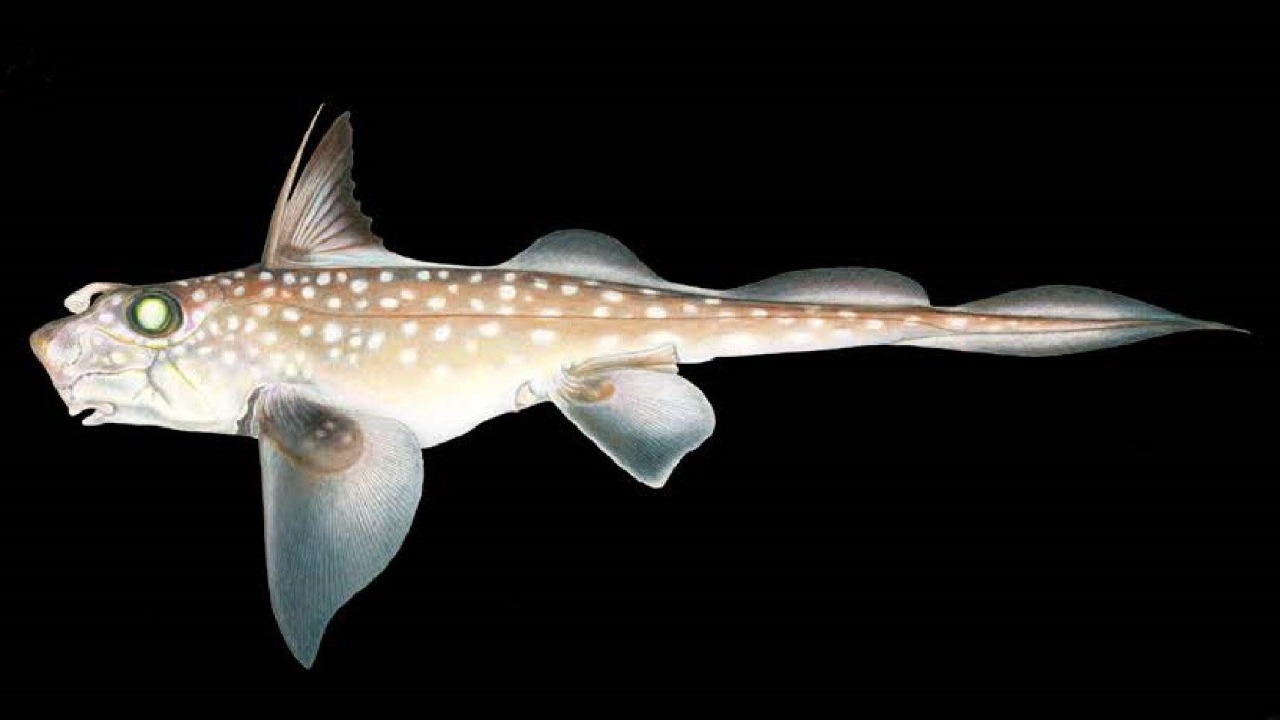
University of Washington scientists have made a remarkable discovery: real teeth growing on the forehead of a deep-sea ratfish. This finding sheds light on the unique adaptations in fish anatomy, particularly for mating purposes. The extra teeth on the forehead are believed to help the fish secure a grip during reproduction in the challenging deep-sea environment. This discovery builds on evolutionary research indicating that teeth originated from fish “body armor” over 460 million years ago, providing a fascinating glimpse into the evolutionary history of these marine creatures.
The Discovery of Forehead Teeth in Deep-Sea Fish
In a groundbreaking study, University of Washington scientists identified real teeth growing directly on the forehead of a deep-sea fish specimen. This unusual feature was found on a ratfish, a species known for inhabiting the deep ocean waters, marking a novel observation in marine biology. The discovery, reported on September 16, 2025, highlights previously undocumented cranial structures in deep-sea species, offering new insights into the complex anatomy of these elusive creatures. The presence of these teeth on the forehead of the ratfish underscores the diverse evolutionary paths that marine life can take in adapting to their environments (OPB).
This finding is significant as it expands the understanding of how deep-sea species have evolved unique anatomical features to survive and thrive in their harsh environments. The ratfish, with its forehead teeth, exemplifies the extraordinary adaptations that can occur in the deep sea, where light is scarce, and pressure is immense. Such adaptations are crucial for the survival and reproductive success of these species, highlighting the intricate relationship between form and function in the natural world (OPB).
Function of the Extra Forehead Teeth
The extra teeth found on the forehead of the deep-sea ratfish serve a critical function during mating. These teeth provide a grip, aiding in reproductive behaviors in the low-light, high-pressure environments of the deep sea. This adaptation enhances physical stability and attachment for the male ratfish during copulation, ensuring successful mating in an otherwise challenging setting. The discovery, detailed in reports from September 23, 2025, emphasizes the role of these teeth in deep-sea survival strategies, illustrating how specific anatomical features can evolve to meet the demands of a particular ecological niche (Times Colonist).
These forehead teeth are not merely a curiosity but a vital adaptation that underscores the complexity of reproductive strategies in marine life. By providing a secure grip, the teeth facilitate the mating process, which is essential for the continuation of the species. This discovery highlights the intricate ways in which evolution can shape the anatomy of organisms to enhance their reproductive success, offering a deeper understanding of the evolutionary pressures faced by deep-sea species (Times Colonist).
Evolutionary Origins of Fish Teeth
Research into the evolutionary origins of fish teeth reveals that they evolved from “body armor” structures over 460 million years ago. This evolutionary timeline traces back to ancient aquatic vertebrates, connecting modern fish dental features like the ratfish’s forehead teeth to prehistoric dermal protections. The study, published on May 21, 2025, underscores how these armor-like origins influenced the development of grasping teeth in species like deep-sea fish. This connection between ancient body armor and modern dental structures provides a fascinating insight into the evolutionary processes that have shaped the anatomy of marine life over millions of years (Live Science).
The evolutionary history of fish teeth is a testament to the adaptability and resilience of marine species. By tracing the origins of these structures, scientists can better understand the evolutionary pressures that have driven the development of unique anatomical features in fish. This research not only sheds light on the past but also informs future studies on the evolutionary biology of marine organisms, providing a framework for exploring the complex interplay between form, function, and environment (Live Science).
Related Advances in Fish Regeneration Research
In addition to the discovery of forehead teeth, recent advances in fish regeneration research have revealed that certain fish species can regrow their hearing cells. Scientists uncovered the underlying mechanisms of this regeneration ability in studies conducted on July 22, 2025. This remarkable capability provides insights into potential parallels with dental regrowth or adaptation in species exhibiting unusual teeth like the ratfish. The ability to regenerate hearing cells highlights the broader regenerative capacities of aquatic animals, offering promising avenues for future research into the regenerative biology of marine species (SciTechDaily).
The discovery of how fish regrow hearing cells is significant as it opens up new possibilities for understanding the regenerative processes in marine life. By studying these mechanisms, scientists can explore potential applications in other areas of biology, including dental regeneration. This research underscores the potential for cross-disciplinary insights, where findings in one area of study can inform and enhance understanding in another, ultimately contributing to a more comprehensive view of the biological capabilities of marine organisms (SciTechDaily).
Broader Implications of the Forehead Teeth Finding
The discovery of real teeth growing on a fish’s head, reported on October 16, 2025, synthesizes the University of Washington’s findings and links them to ongoing advancements in marine biology. This finding expands the understanding of deep-sea biodiversity, with the ratfish example illustrating adaptive teeth beyond traditional jaw structures. The presence of these teeth on the forehead of the ratfish highlights the diverse evolutionary paths that marine life can take in adapting to their environments, offering new perspectives on the complexity and diversity of life in the deep sea (ScienceDaily).
This discovery ties into broader evolutionary and regenerative themes, potentially informing future studies on fish anatomy. By exploring the unique adaptations of deep-sea species, scientists can gain a deeper understanding of the evolutionary processes that have shaped the diversity of life in the ocean. This research not only enhances the knowledge of marine biology but also provides valuable insights into the broader patterns of evolution and adaptation in the natural world (ScienceDaily).